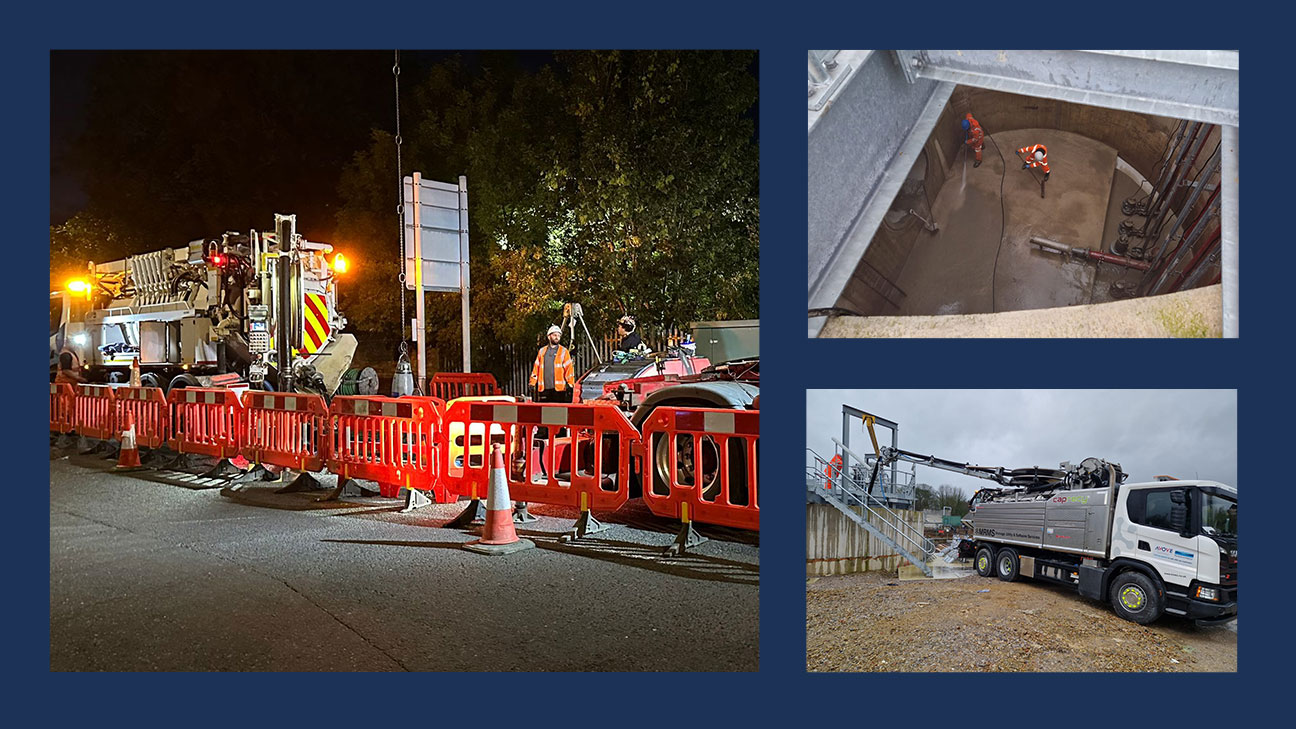The maintenance of sewer wet wells is vital for the well-being of sewer systems. Neglecting regular inspection and remedial work can lead to reputational, economic and environmental consequences.
What are Sewer Network Wet Wells?
Sewer network wet wells, also known simply as a wet wells, are a crucial component of a sewage or wastewater pumping station.They are an underground chamber or reservoir designed to collect and temporarily store sewage or wastewater before it is pumped to a higher elevation or transferred to a treatment facility.
Wet wells house submersible pumps that are responsible for moving the sewage or wastewater through the system. These pumps are typically activated by float switches or sensors that detect the level of liquid in the wet well. When the sewage or wastewater reaches a certain level, the pumps are activated to pump the contents out of the wet well and into the next stage of the sewer network or treatment process.
Wet wells vary in size depending on the volume of sewage or wastewater they need to handle and the specific requirements of the sewer network they serve. They are typically constructed from durable materials such as concrete to withstand the corrosive nature of sewage and wastewater. Proper maintenance and cleaning of wet wells are essential to ensure the efficient operation of the sewer network and to prevent issues such as blockages, backups, and overflows.
Why Maintenance of Wet Wells Matters
Wet wells, at the core of the sewer network infrastructure, are essential components that require regular cleaning to ensure smooth operation. Maintaining a functioning sewer system is essential for public health and environmental protection.
Over time, wet wells can accumulate debris, sediment, and hazardous materials, particularly with the rise in the use of disposable wipes. Even so-called “flushable” wipes pose problems as they do not break down like toilet paper. Water UK’s “Fine to Flush” certification, which was only intended to apply to a limited few brands of hygiene wipes, has led to confusion over what can be flushed. Between 2.1-2.9 billion wet wipes are now ending up in Britain’s waterways annually, according to government figures. Combined with urban population growth and warmer, wetter weather conditions, the strain on sewer systems is immense.
Neglecting proper maintenance can lead to blockages, overflow, and potential environmental contamination, which not only poses financial costs but also environmental risks. Debris, sediment, and grease build-ups can obstruct wastewater flow and cause pump failures, resulting in backups and overflows as described.
Addressing these failures often requires expensive emergency repairs and cleanup efforts, straining budgets and resources. This highlights the importance of having a planned and reactive strategy in place to ensure the continuous operation of sewage systems.

Our Approach to Maintenance of Wet Wells
At MRMS, we offer efficient sewer infrastructure cleaning services, including wet wells, pumps, and pipework. Using advanced technologies, we pump out, clean, and recycle the water in the system. Additionally, we employ high-pressure jet cleaning to remove contaminants from wells and pipes. Recently, we were entrusted to work on a new 10m x 10m wet well, conducting a thorough high-pressure clean to prepare it for operation.
Safety takes precedence in any maintenance, particularly within the confines of wet wells. Key precautions include:
- Confined space entry training for worker
- Continuous gas monitoring
- Advance planning and practice of emergency procedures
Each pumping station presents unique challenges, necessitating a tailored approach to maintenance. A comprehensive hazard assessment informs safety protocols and operational planning.
Understanding flow patterns is crucial for scheduling maintenance activities. Considerations include peak flow periods and the frequency of required cleanings, typically ranging from weekly operator maintenance to semi-annual comprehensive clean-outs.
Contact us to learn more about our wet well cleaning services and how we can collaborate with you to develop a preventative maintenance strategy that keeps your systems running smoothly.
